Nectarines are an excellent summer fruit. They are similar to peaches, however, there is a subtle difference between the two fruits. The nectarines have a smooth outer layer, but peaches have a well-known fuzzy coating. Nectarines are delightful and refreshing fruits that guinea pigs may eat.
Guinea pigs can eat nectarines but only in moderation as they contain a lot of sugar. Their stomachs do not digest sugars well, so consider nectarines only as a treat rather than regular food for guinea pigs. Also, nectarines have a pit as a core, which needs to be removed before giving this fruit to the guinea pigs.
For the above reasons I only give them in moderation. I consider nectarines to be a treat rather than a regular guinea pig diet.
Table of Content
Are Nectarines Good for Guinea Pigs? | Health Benefits
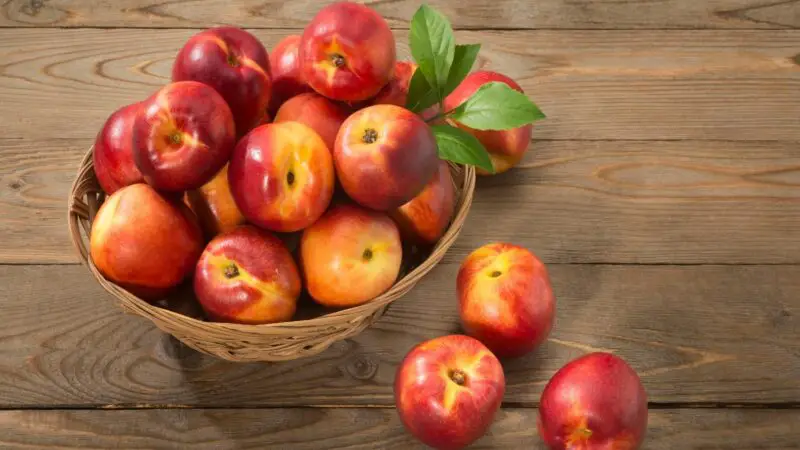
Because nectarines include carbohydrates and proteins, they will provide energy to the guinea pigs. It also has riboflavin will also aid in the conversion of carbohydrates and proteins to energy.
Nectarines can help your cardiovascular system. This means there will be a lower chance of heart-related disorders such as hypertension, stroke, and other similar difficulties. This fruit has no cholesterol and very few fats. Without cholesterol, blood arteries remain unclogged, and there is also a reduced chance of heart-related disorders and weight fluctuations.
The blood is stronger and less prone to anemia when it has adequate iron from nectarines. This substance helps to maintain blood pressure homeostasis and a healthy cardiovascular system. Copper combines with iron to make blood stronger and healthier, as well as to produce more red blood cells, which are required to avoid anemia.
The potassium in the nectarines will regulate blood pressure, and niacin, also known as vitamin B3, lowers cholesterol and ensures healthy cognitive functions.
Vitamin A is among the best antioxidants for guinea pigs and it will keep your pet’s immunity in great shape. It will block the damage from the free radicals that cause diseases and early aging.
Nectarines provide vitamin C, which will benefit the guinea pig’s general health. Guinea pigs are vulnerable to illnesses such as scurvy if they lack this vitamin.
Nutrition Facts of Nectarines for Guinea Pigs
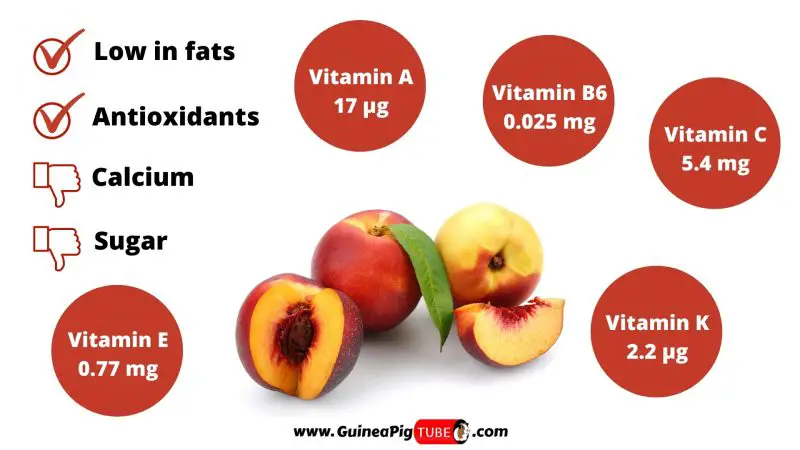
Here are the nutrition facts per 100g (3 oz) of nectarines:
- Energy – 44 kcal
- Protein – 1.06 g
- Total lipid (fat) – 0.32 g
- Carbs – 10.55 g
- Dietary fiber – 1.7 g
- Sugars – 7.89 g
- Calcium – 6 mg
- Iron – 0.28 mg
- Magnesium – 9 mg
- Phosphorus – 26 mg
- Potassium – 201 mg
- Sodium – 0 mg
- Zinc – 0.17 mg
- Copper – 0.086 mg
- Vitamin C – 5.4 mg
- Vitamin B-6 – 0.025 mg
- Vitamin A – 17 µg
- Vitamin E – 0.77 mg
- Vitamin K – 2.2 µg
- Thiamin – 0.034 mg
- Riboflavin – 0.027 mg
- Niacin – 1.125 mg
- Folates – 5 µg
- Lutein + zeaxanthin – 130 µg
Can Nectarines Be Bad for Guinea Pigs? | Possible Risks
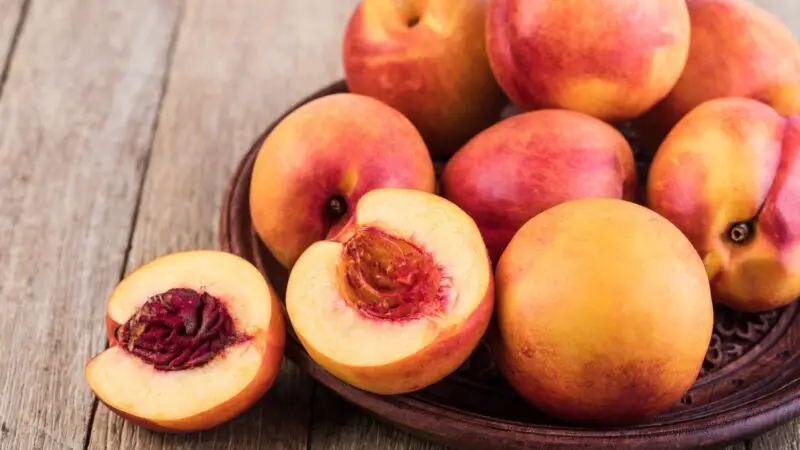
- Stomach aches – The nectarines are known to be very sugary, and that is harmful to your guinea pigs. Due to the sugar content, the guinea pigs may get belly aches or loose stool.
- Urinary problems – This fruit also has some amount of calcium. In adult guinea pigs, this mineral can create urinary stones and even cause fatal renal failure if fed in large amounts.
Serving Size and Frequency of Nectarines for Guinea Pigs
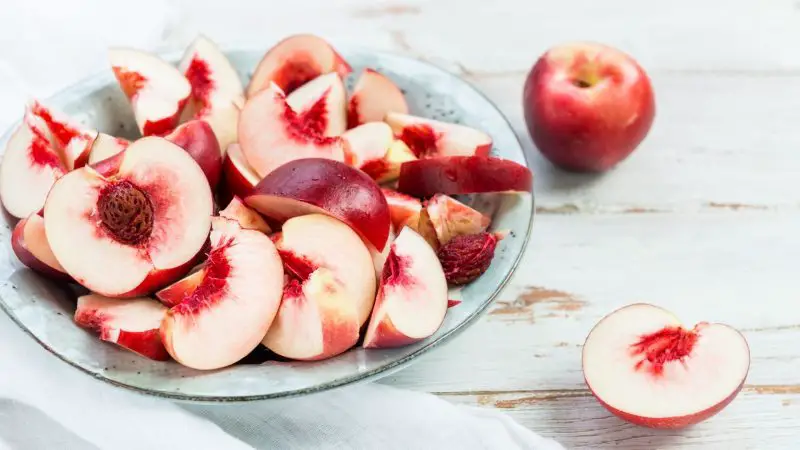
Can Guinea Pigs Have Nectarines Every Day?
Guinea pigs shouldn’t eat nectarines every day. Nectarines contain sugar. To avoid too many sugars in the guinea pig’s diet, you should feed them nectarines only 1 to 2 times per week maximum. You also need to give your guinea pigs other fruits such as peaches, oranges, mango, tangerines, apricots, and many others in order to establish a healthy and diverse diet.
How Many Nectarines Can Guinea Pigs Eat?
Due to sugar, calcium, and possible risks, guinea pigs shouldn’t eat too many nectarines. A normal serving would be a few slices or a few small chunks for one guinea pig. That amount is enough for a healthy and balanced diet, especially if you combine that with other fruits and vegetables. After all, nectarines are a treat, not an everyday food for guinea pigs.
More Information About Guinea Pigs and Nectarines
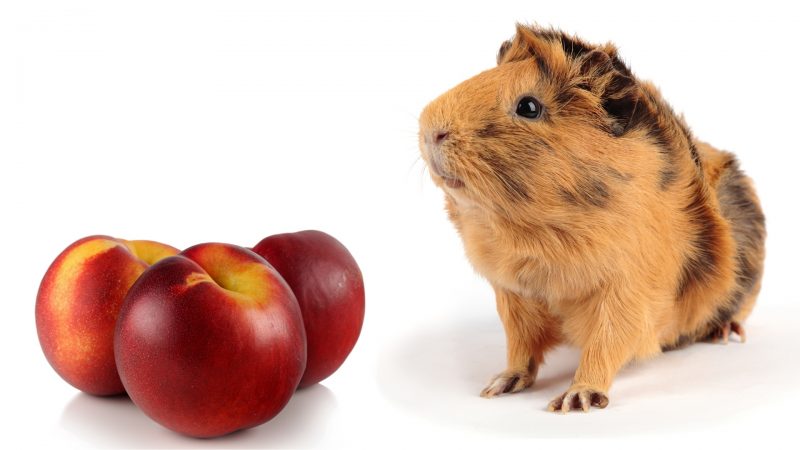
Can Guinea Pigs Eat Nectarine Skin?
Guinea pigs can consume nectarine skin, which is edible for them and quite tasty. Just ensure that the nectarine or any other fruit is washed properly if you don’t plan on peeling it for your guinea pigs.
If you notice that your guinea pigs don’t like nectarine skin, you can peel it off. Guinea pigs, just like humans, have their personal taste preferences, and maybe some of them will not like the taste and the texture of the nectarine skin while others won’t.
Can Guinea Pigs Eat White Nectarines?
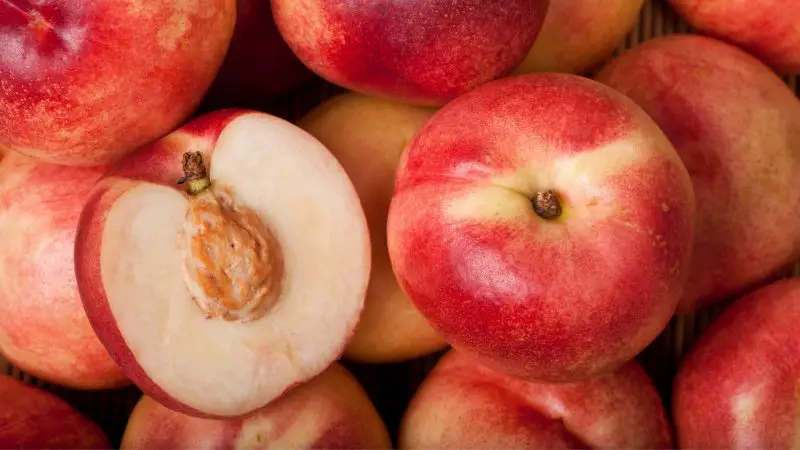
Guinea pigs can eat white nectarines, and some of them will prefer these nectarines to yellow ones. The reason is their taste. White nectarines are less acidic and taste sweeter than yellow nectarines, but they still have the same amount of sugar. Because of that, you need to also feed them white nectarines only in moderation.
Can Guinea Pigs Eat Yellow Nectarines?
Guinea pigs can eat yellow nectarines but also only in moderation. It’s very important not to overfeed them with yellow nectarines due to sugar and calcium content. However, they are good for guinea pigs in small amounts because they are low in calories and provide many beneficial antioxidants, vitamins, and minerals.
Quick Facts on Nectarines
- Nectarines are also called “shaved peaches.”
- The color of nectarine can be orange, pale whitish color, and yellow-pink.
- They originated in China 2000 years ago but were mostly cultivated in Persia, Italy, and Greece.
- The Spanish travelers brought them to America in the 17th century.
- The name “nectarine” means “sweet like nectar.”
- Nectarines belong to the rose family, or “Rosaceae.”
- The best seasons for the nectarines are spring and early autumn.

We have also made a full list of foods that guinea pigs can and can’t eat (150+ Types of Foods). Be sure to also check our recommended products page for everything you will ever need to assure a happy life for your guinea pigs. Hope this information was helpful and you have found the answer you were looking for.
List of Sources
Nutrient Requirements of Laboratory Animals: Fourth Revised Edition
The Effects of Diet on Anatomy, Physiology and Health in the Guinea Pig
